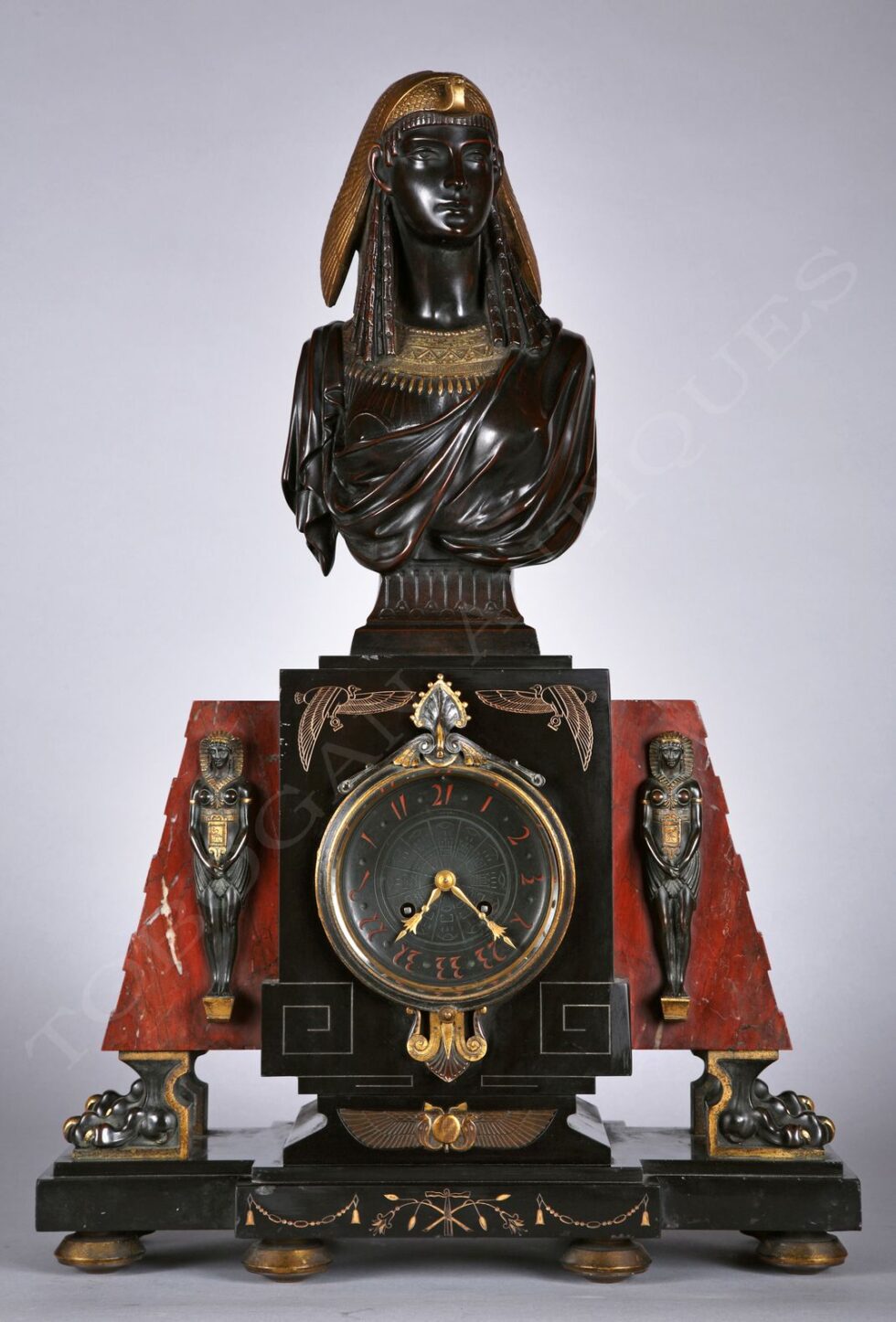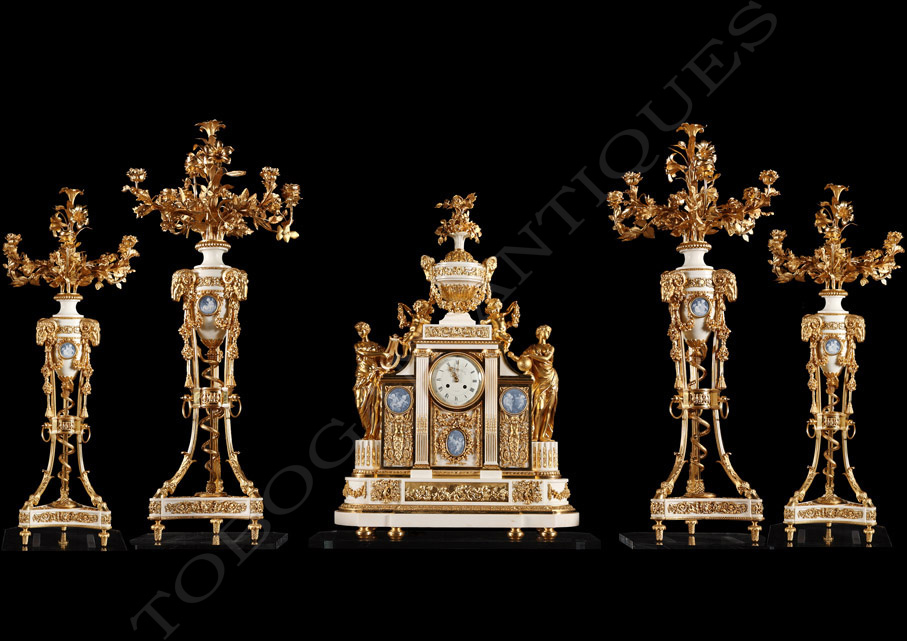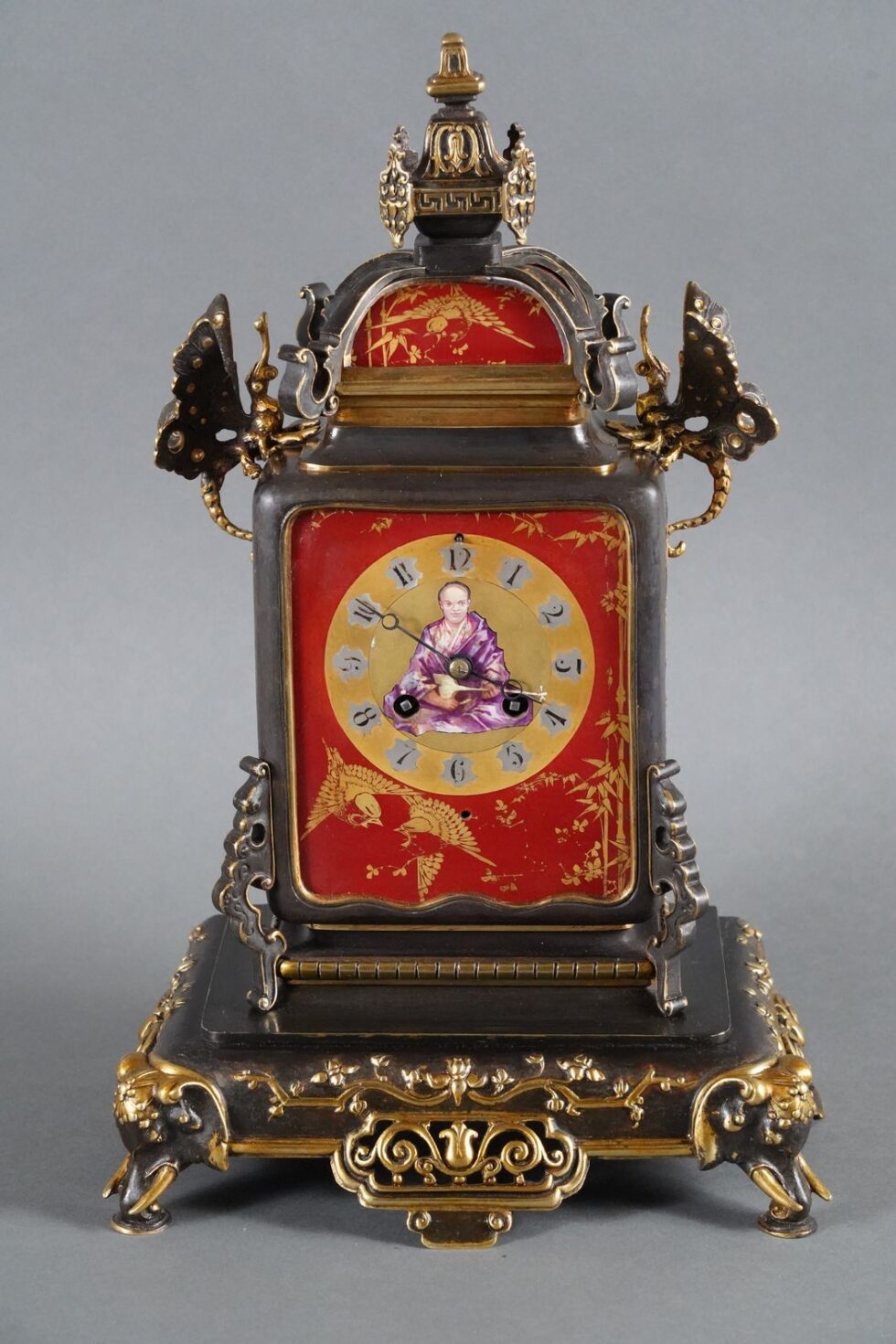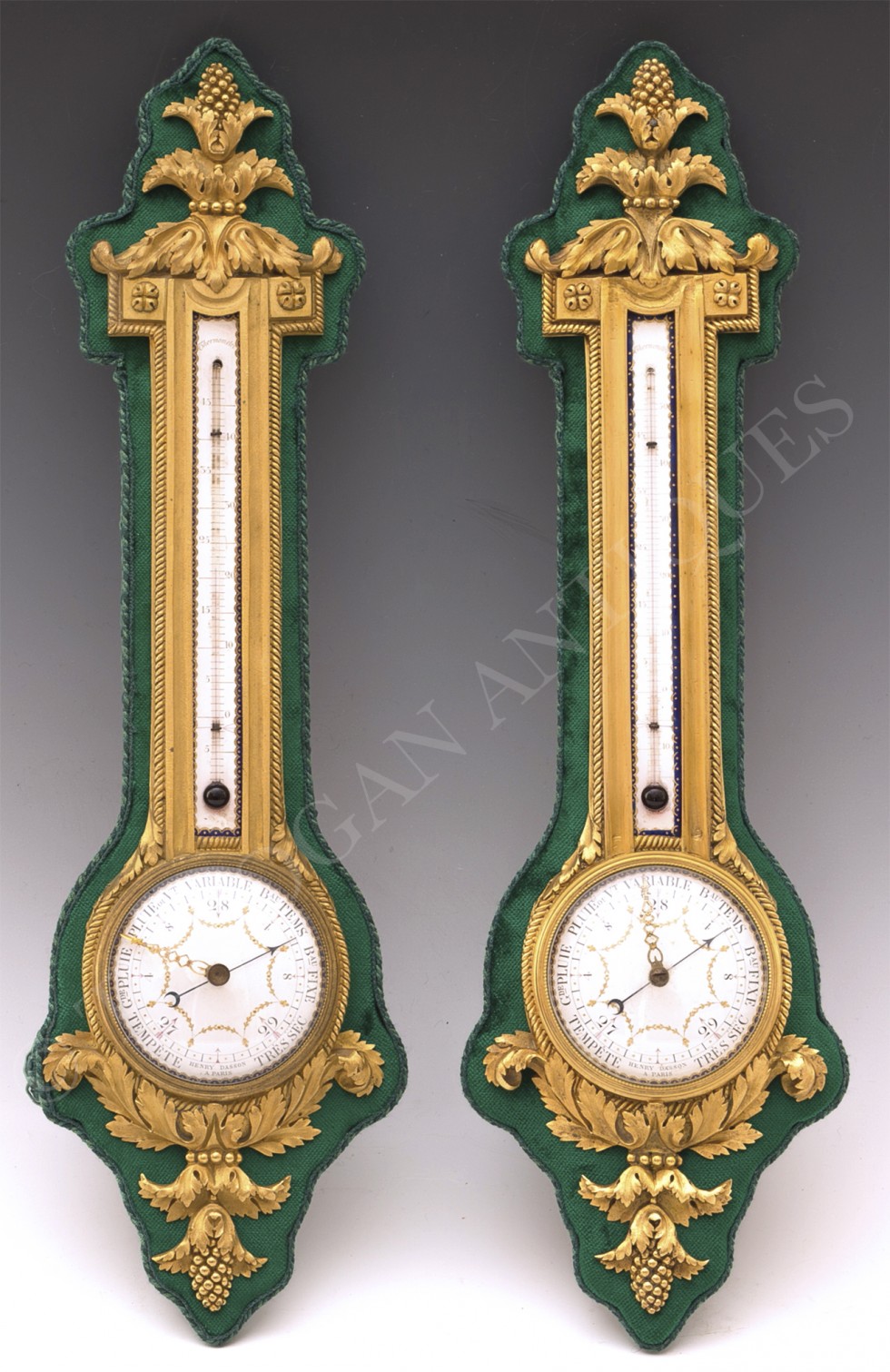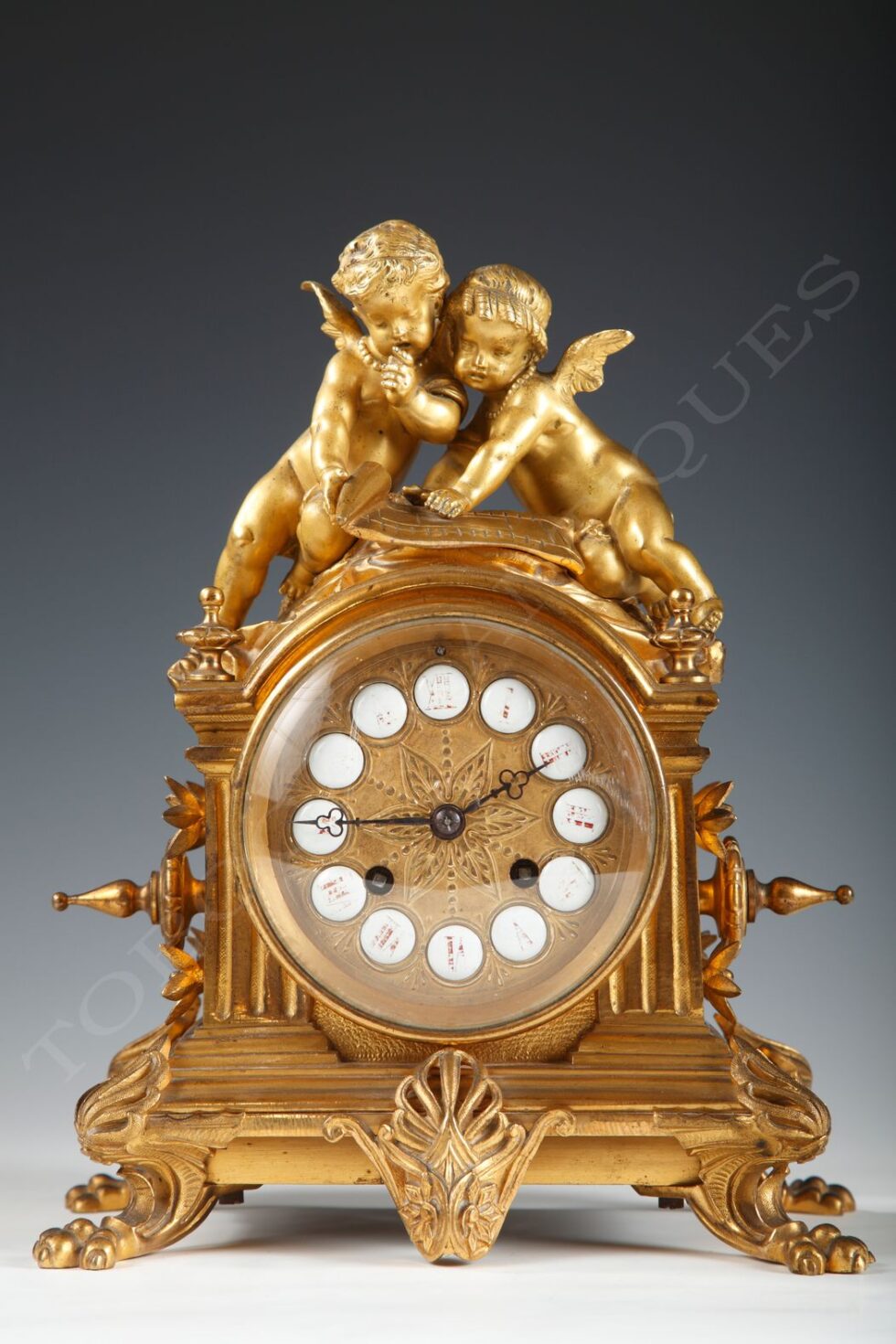Ref. 1432
H. Dasson
Cabinet-maker & Bronze-caster
(1825-1896)
Important «Enfant Guerrier» Mantel Clock
Signed and dated Henry Dasson 1877
France
1877
Height: 63 cm (24,8 in.); Width: 64 cm (25 in.); Depth: 29 cm (11,4 in.)
Rare gilt and patinated bronze and marquetry on ebony mantel clock representing an “enfant guerrier”. The upper part is composed of a putto, leaning on the face of the clock, wearing a helmet and holding a gladiator sword. The lower part is constituted of a lovely ebony base embellished by a copper and brown tortoiseshell marquetry in the “Boulle” style and ornamented with a gilt bronze satire head in the middle. Rests on four chiseled and gilded bronze lion feet decorated by a foliage decor.

Another gilded bronze, marble and wood mantel clock, signed Henry Dasson for the clock and Bouchardon 1731 on the marble sculpture.
Biographies
As a cabinet-maker and a bronze-caster, Henry Dasson executed in his Paris workshop sumptuous copies of royal 18th century models and some pieces of his own modified 18th century design. He used for his pieces of furniture and « objets d’art » the very finest ormolu mounts with high quality mercurial gilding. He purchased the firm of the cabinet-maker Charles Winckelsen upon his death in 1871 and mainly produced in the Louis XV and Louis XVI style. His participation at the Paris 1878 Universal Exhibition was highly remarked with a Louis XVI style table, all in bronze and considered as a « chasing masterpiece », and a copy of the famous King Louis XV desk (original piece exhibited at the Versailles Castle). At the 1889 Universal Exhibition, he won a « Grand Prix » for his beautiful furniture.
Starting his apprenticeship with his sculptor-architect father, Edmé Bouchardon later enters Guillaume Coustou’s workshop. Thank to the First Sculpture Award received in 1722, Edmé Bouchardon leaves for Rome in 1723. The reputation acquired thanks to his works in Rome precedes his arrival in Paris, where he is integrated to the Royal Academy upon his return in 1733, conferring him the title of Sculptor of the King. Among his prestigious works can be mentioned the statues of the Saint-Sulpice church ‘s choir in Paris, the fountain, Rue de Grenelle executed between 1739 and 1745, then between 1740 and 1750, L’amour se taillant un arc dans la massue d’Hercule currently displayed at the Louvre Museum.
Contact us
Tobogan Newsletter
If you want to be up-to-date with our new acquirings you can sign up to our newsletter.



